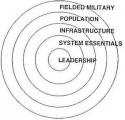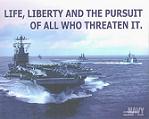That is why I question the wisdom of the UK with their two new 65000t carriers. I would have thought that 3 or 4 smaller ones would make more sense. Also with regards to round the clock availability. This last point is seen as a weakness here in NZ where we only have 2 frigates. One has been in Auckland for a while now for a bit of a facial. That leaves just one in the game.
Some interesting points from this article: http://www.naval-technology.com/projects/cvf/
A number of protective measures such as side armour and armoured bulkheads proposed by industrial bid teams have been deleted from the design in order to comply with cost limitations.
The carrier might be built for but not with the installation of a close in weapons system. Another systems which could be fitted if budget were made available would be two 16-cell vertical launchers for the Aster missiles.
Also, the complement of aircraft seems a bit disappointing at 40, for a ship that is two thirds the size of a US carrier. I assume the reduction in aircraft relative to the reduction in displacement is not a linear equation. And that may well be the answer to my above mentioned concern.













Bookmarks